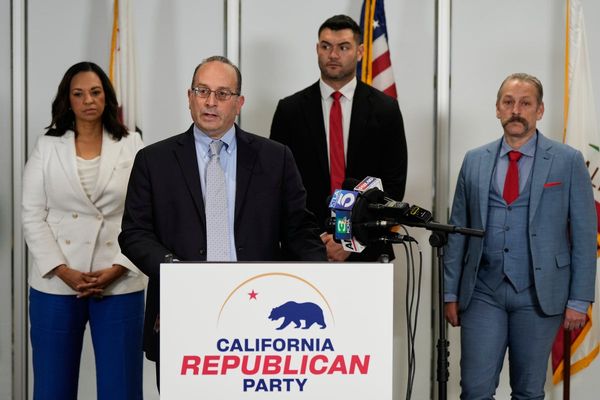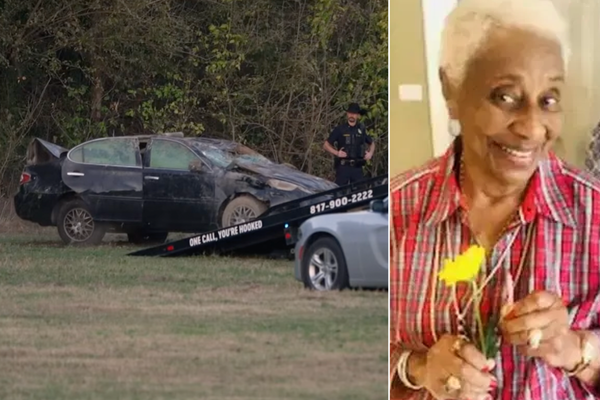
I moved to San Francisco in my early 20s and fell in love with it: the vibe, the ocean, the hills. It’s a big city on small terrain and feels like nowhere else. But it also gave me access to something I longed for: a diverse, vibrant and radical queer community. It was shocking how many people made up the queer scene in San Francisco in the 1990s, which is when this image was taken. It all felt so fast; there was so much going on. I would walk out of the house and immediately run into people I knew. On any given night of the week, there was a club night, event or show that people would be at – often more than one.
We lived in tight circles of friends but our extended networks were vast and constantly overlapping. People moved in and out of your life; you drifted apart and you came together again. Our lives revolved around the Mission District, a predominantly Latin neighbourhood in the heart of the city.
I can’t recall exactly when I met Dusty and Mary, the couple in this photo. I lived with Dusty in a houseshare for a few years. Mary was a friend of a friend before becoming Dusty’s partner, and spent a lot of time at our place.
I carried my camera everywhere at the time. Photography was a casual, spontaneous, integrated part of my communication with somebody – it was built into the fabric of my life. On this day, we were leaving the house we shared when I saw Dusty and Mary sitting in this car and knew I had to capture it. The car was an old white Rambler that seemed to make the rounds of San Francisco’s queer scene. Few of us owned our own cars – we all shared. I was struck by how beautiful they looked.
I love the colour and composition. There’s a lick of red pulling from the right foreground into the centre of the image. It’s like an invitation into a new world, like looking into a snow globe. And there, right in the centre, you have Dusty and Mary, staring directly at you with this smouldering gaze. I took a whole roll of shots. In those pre-digital days, you never knew what you had. Taking rolls to be developed felt like an Easter egg hunt. But this image stood out because of its sheer emotional warmth.
Dusty and Mary loved the shot. It became a ritual among my friendship group to share images and hand out prints. We would sit and look at this archive of our lives. In retrospect, it was such a gift to have been able to reflect on our life as we lived it. I think it added a kind of excitement and pride about the lives and community we had built.
It’s not just their intimacy that strikes me now; it’s also how perfectly it captured a specific time in San Francisco’s history. Dusty and Mary were an iconic butch-femme couple, and their look is so distinctly 90s – Mary in the slip, Dusty in that archetypally masculine white vest. It’s both a document of my personal history and a document of queer life at a specific moment in the city’s history.
This was a time when a queer community couldn’t be located easily online. To find people like you, you moved to cities like San Francisco. It’s easy to see, in retrospect, that this was a turning point for LGBTQ+ rights: it was long before marriage equality, but I think we were aware, even at the time, that we were part of a broad cultural shift. The world we lived in was a pretty radical counterculture: experimentation in terms of sexuality and gender was central to our lives, and we were not embraced by the outside world.
In preparing these images for the new book, I’ve been really struck by the reaction of the new queer generation. There’s a hunger for seeing and understanding their queer history, and for a glimpse of the lives that came before them. I hope my work helps to archive and contribute to our collective history.
• Renegades. San Francisco: the 1990s is published by Hatje Cantz

Chloe Sherman’s CV
Born: New York, 1969
Trained: “Fine art photography degree at the San Francisco Art Institute”
Influences: Dorothea Lange, Mary Ellen Mark, Del LaGrace Volcano, Nan Goldin, Eugene Richards, Alex Webb, Lewis Hine, Henri Cartier-Bresson
High point: “Hearing feedback that my work has moved, inspired, or empowered someone”
Low point: “My transition from film to digital. I struggled with the new technology and gear – and missed the formatting and tactile experience of film”
Top tip: “A great shot is sometimes the quiet, ordinary or unexpected moment. Observe behind the scenes, where the story is often more intimate and intriguing”







